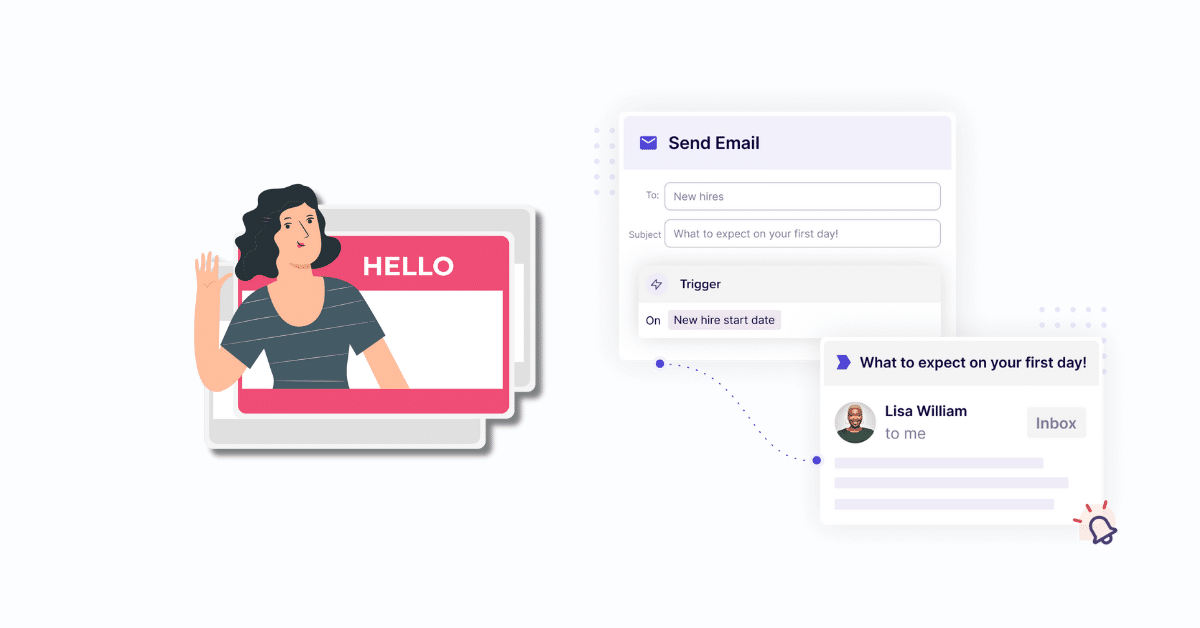The work from anywhere protocol force-adopted in 2020 quickly shed light on the many advantages and disadvantages of remote work. Now, businesses are trying to wrap their heads around new employee expectations, and are weighing pros and cons as they work to define their long-term business structure approach. Meanwhile, workers are in strong agreement that flexibility is a must-have. Will we see more businesses permanently adopting a remote-first or hybrid approach as a result?
Here’s what the data tells us about the state of hybrid work today:
- A 2021 Accenture study of 9,000+ workers revealed 83% of employees prefer a hybrid work model. (Forbes) Companies want to establish normalcy for their teams, and many have listened to the need for both dedicated office space and personal flexibility.
- 74% of U.S. companies are using or planning to implement a permanent hybrid work model. (Zippia) This represents a massive shift in the workforce, and what we consider to be the normal employee experience. As a result, business leaders everywhere have to re-examine their processes and optimize for hybrid.
What needs to change when you implement a hybrid model?
Important hybrid considerations
Let’s focus on day one, when the new hire journey begins with onboarding. HR departments and managers have to dedicate a ton of foresight and planning to build a seamless onboarding process, and with new work structures, there are new things to think about. So how does the onboarding experience need to change to be effective in a hybrid workplace?
With a hybrid team, you still have to manage all the details involved in any onboarding process. It’s just that now, you also have the added complexity of working around varying schedules while taking competing work preferences and diverse expectations into consideration.
This is a new process, and there’s not a lot of literature or guidance out there on how to get it right. That’s why Cleary and OfficeTogether are joining forces to provide expert tips on how to build an effective hybrid onboarding workflow. We’ll talk about key things you should add to your planning process and will touch on a few ‘whoopsie-daisies’ you definitely want to avoid. And, we’ll share how smart software tools can save you time and streamline the hybrid onboarding experience.
When hybrid onboarding goes awry
When simple steps are missed in the onboarding process, it can cause a very negative experience for a new hire. Imagine you got a job offer with a company that you’re really excited about. You wake up early, get ready, and show up on-site for your first day, eager to meet your team. It seems a little quiet when you get there, but an office assistant greets you at the front desk and the head of IT shows you to your desk. You start to get situated and open your email, only to find a ‘Team Welcome’ Zoom link in your inbox. What a bummer.
Companies that foster friendships at work are 12% more profitable and have 7X better employee retention, so setting your new hire up to make positive relationships with both in-person and virtual colleagues is critical. Now, here’s how you make sure you don’t put your new hire – who you worked so hard to woo, assess, and inspire to join your team – in this less than ideal position.
Setting yourself up for hybrid onboarding success
A new hire’s onboarding experience has a massive impact on their likelihood to stay with your company, making it one of the most critical stages of the employee journey to get right. That being the case, it’s critical to build a digital experience catered to the hybrid work environment. Follow these simple steps to deliver a highly “choreographed” and personalized onboarding experience, every single time.
1. Be transparent about your company’s hybrid work structure
Giving your new hire transparency into the structure of the office will help them feel confident and secure in their new role, especially when working inter-departmentally. Company policies vary significantly in terms of in-office or remote expectations.
There are three primary concepts we regularly see:
- Companies have a blanket policy all employees must adhere to.
For example, employees may be required to work in the office three days a week and work remotely two days a week. Those days might be pre-determined for the best function of the business, or the employee may have the ability to choose. - Team leaders set the best hybrid schedule for their business units.
For example, sales is in-office on Monday, Wednesday, and Friday. Engineering is in-office Tuesday through Thursday. - Employees have complete autonomy in deciding where they work.
Companies that go this route allow employees to choose when they work in-office and they work remotely. One potential challenge with this setup is it does require a good hybrid scheduling system, like OfficeTogether, if you have limited space.
To make sure you’re set up to build a healthy hybrid culture, it’s ideal to make it clear there’s no judgment about where someone is working and to be transparent about where people are located. You want employees to be able to find and feel connected to coworkers and leaders.
Providing visibility into where each employee’s boss and fellow team members are physically located helps create a sense of togetherness that can be lost in a remote work environment. To this end, using tools that enable employees to see where their colleagues are working on any given day, can be incredibly valuable.
2. Ask for schedule preferences up front
One of the main aspects that attract talent to a hybrid workplace is the ability for schedule flexibility. Every employee has unique circumstances and priorities and takes those things into consideration as planned in-office days versus remote days. If your company allows employees to determine their own schedule to any degree, it’s important to ask for their preferences on day one, if they weren’t already collected in the recruiting process.
For example, an individual who is a caregiver to a loved one might prefer certain days to work remotely so as to be more available to their dependant. Another individual might not want to work from home regularly at all, due to a shared living situation with decreased privacy. Again, the most important thing you can do to support hybrid employees is to capture preferences up front so you’re organization can make sure that all employees get to enjoy the positive benefits of the hybrid work structure.
Many hybrid offices also need to collect sensitive medical data, like vaccination status, before bringing people into the office to uphold the safety of their space. In order to be OSHA compliant, it’s important to have tools on hand that allow you to store and retain things like vaccination and daily health check records in the event of an outbreak or audit.
3. Coordinate schedules to meet new hires on-site if possible
The need for meaningful connection is an innate part of the human experience, and a recent Gallup poll shows that people report the highest levels of happiness when they spend six to seven hours per day socializing. Companies need to be aware of this and must be strategic about working face-to-face time into the calendar to successfully retain employees.
This effort starts on day one. A new hire’s first week presents companies with an incredible opportunity to help them cultivate positive relationships with their boss, peers, or direct reports. Planning a welcome event in the office, in-person training sessions, or even scheduled one-to-one meetings in the office are a few ways to make a great first impression.
4. Get creative to drive in-office engagement
In a hybrid environment, it can sometimes be challenging to drive in-office attendance, so hosting special events featuring engaging speakers, interactive workshops, and fun team-building activities can be a great tool. Organizing and promoting these events can be challenging unless you’re using a smart platform to seamlessly send automated event reminders to relevant audiences. You can craft and send individualized messages that are perfectly tailored to engage both in-office and remote employees.
5. Build a hybrid remote onboarding workflow
There are a lot of people and moving pieces involved in the onboarding process, so planning is key. If you haven’t already taken the time to map out all the steps and stakeholders involved in your onboarding procedure, you’re in luck. Cleary recently built a comprehensive onboarding mapping tool that people teams can use to make sure they’re getting it right. This will serve as a great tool to help you streamline and optimize onboarding, which in turn helps boost employee satisfaction, loyalty, trust, and retention. Download your free copy here.
Take hybrid onboarding to the next level
Companies that have implemented automation into their onboarding process are reaping big benefits. Using an oOnboarding eExperience platform to automate repetitive onboarding tasks, like sending welcome emails and tracking status updates saves companies days each week – time that used to be spent on manual work. Automated set-it-and-forget-it workflows are personalized for each new hire. These workflows are also tracked every step of the way, so your team always has an at-a-glance view of where employees are in the onboarding process.
Collaboration tools also make it easy to ensure that everyone on your team is accountable and armed with knowledge via a shared dashboard that prompts action throughout your coordinated new hire journey. In addition to automating many steps of the process, an oOnboarding eExperience platform also helps companies build a single hub that gives all employees easy access to company resources, eliminating the need to build new documents, search through Slack, and spend hours building out resource repositories.
The future is clear; hybrid is here to stay and businesses need to evolve to support this unique new model. Follow the tips outlined above to make sure your onboarding workflow is up to the task. Doing so will empower your company to deliver a seamless, memorable hybrid onboarding experience that new hires will value for years to come.




